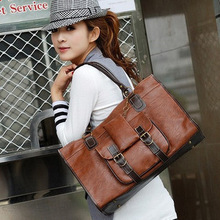Do you want to undertake in Asia? To open a startup and take advantage of the significant growth of the Asian market? This continent, which is currently being developed now represents lucrative opportunities for startups. Singapore comes top of the list as the best place in Asia to create and develop a startup, but China, South Korea, and Hong Kong are also supportive environments. A ride on the subject of the creation of his startup in Asia.
StartUp in Asia, a continent where it ‘s nice to start a business
While in some countries, particularly in Europe, entrepreneurship represents an obstacle course, some Asian countries have more favorable regulations for entrepreneurs. Administrative, fiscal and legal framework, among other factors essential in starting a business, are much more facilities and offer some advantages if you embark on creating your startup in Asia. An area of the world where businesses flourish out of sight now, Asia has a pro-business environment with ease of installation, but also thanks to its attractive taxation and the availability of labor cost reasonable. The innovation in many sectors and the excellent quality of life in most of these countries are only further encouraging the establishment of startups in the continent.
Singapore, the paradise of startups in Asia
Of all the countries in Asia, Singapore is currently top of the list of the best places where the business environment is more favorable and advantageous to create and develop a startup. Some actions of the local government have also exacerbated the phenomenon of rapid development of startup in Asia. Their goal is to stimulate the emergence and growth of this sector of the business while encouraging the actors to innovation. While most of the largest investors favored their presence in China and India there a few years back, today the credit goes to Singapore with its universe of more favorable business and further facilitating the creation and development of startups.
Some tips to raise its startup in Asia
If the board in China or India or Estonia for the creation and development of startup was most acclaimed in the last few years, South Korea, Hong Kong, and Singapore are now represented as parts of the world find new nuggets for investors. However, each country and region may represent each of the different elements mainly promoting the establishment and development of business abroad. Besides, if you want to mount your startup in Asia successfully, it is important to take into account elements such as the area where the business will be most interesting. Indeed, the technology sector is more promising now. Also, some Asian countries have opted for government grants specifically intended to motivate boxes of foreign technology to settle in their countries. Moreover, although in some countries the cost of living can be quite high, the possibilities for getting your business to minimal cost are numerous. It is also more important to be in order with the laws in force because the controls are not greener in some countries like Singapore. Council in China and Singapore for investors, know that consumers are very brand-addict and not always very attracted to new products, it would be preferable to have a business that will require little regarding cash, the customer acquisition can be more time consuming and laborious.







